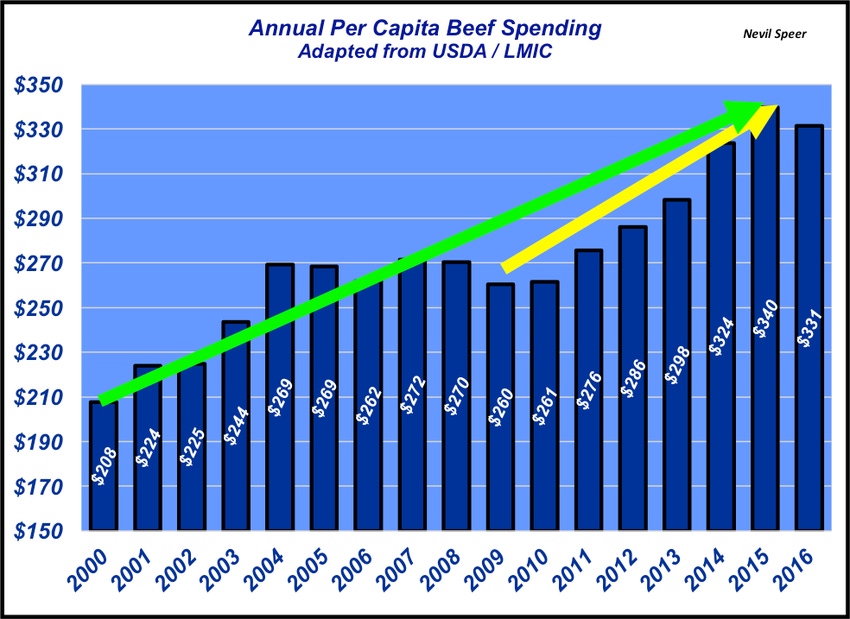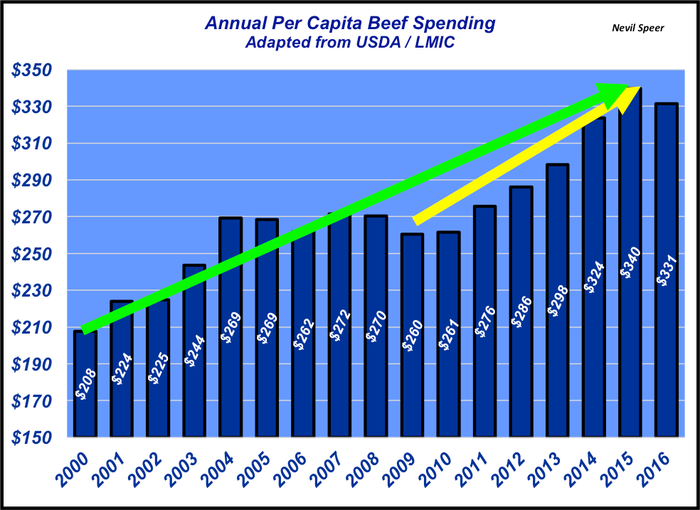How Natural Resources Defense Council got it wrong on beef demand
In spite of efforts by anti-beef activists to spin the numbers incorrectly, consumers are buying more beef, and paying higher prices, than even five years ago.
May 25, 2017

I recently wrote an editorial for Feedstuffs – Real story of U.S. beef most favorable – addressing what’s really occurring with consumers and their perception of the beef industry. The editorial was in response to a new report published by the Natural Resources Defense Council (NRDC) titled, Less Beef, Less Carbon.
NRDC explains that, “…between 2005 and 2014, we reduced our per-capita consumption of beef by 19%.” The report contends that because Americans ate less beef between 2005 and 2014, we have effectively “avoided the equivalent of the annual tailpipe emissions of approximately 39 million cars.”
The trouble with the report is that it doesn’t address the underlying cause for declining beef consumption in the U.S. In other words, it leaves the door open for misinterpretation about consumers and their perception of beef in the marketplace. To that end, Sujatha Bergen, NRDC policy specialist, tries to explain declining consumption as a “welcome side effect” of a growing anti-beef sentiment in the U.S. – wanting us to believe consumers are choosing NOT to eat beef because it allegedly harms the planet.

Wrong.
BEEF readers know there’s a substantive difference between consumption and demand. Demand is a function of both supply and price. In other words, even with smaller supply, if consumers aren’t favorable toward beef, there’ll be little pricing power to clear the market.
What really matters is spending. To that end, per-capita beef spending in 2010 was approximately $261; in 2015, that measure reached $340! Meanwhile, the U.S. population was about 309 million in 2010 versus 321 million in 2015. Doing some quick math, that means U.S. beef spending increased nearly $28.5 billion in just five years. The beef industry has proven its ability to successfully capture new spending at an increasing rate.
I noted in the Feedstuffs column that, “…consumers continue to reward the beef industry for their efforts with their dollars. And in the end, that’s the only measure of business success that matters.” How do you perceive NRDC’s positioning of U.S. consumer perception of the beef industry? What else would you want to share with NRDC about their recent report? Leave your thoughts in the comments section below.
Nevil Speer is based in Bowling Green, Ky., and serves as vice president of U.S. operations for AgriClear, Inc. – a wholly-owned subsidiary of TMX Group Limited. The views and opinions of the author expressed herein do not necessarily state or reflect those of the TMX Group Limited and Natural Gas Exchange Inc.
About the Author(s)
You May Also Like




.png?width=300&auto=webp&quality=80&disable=upscale)
